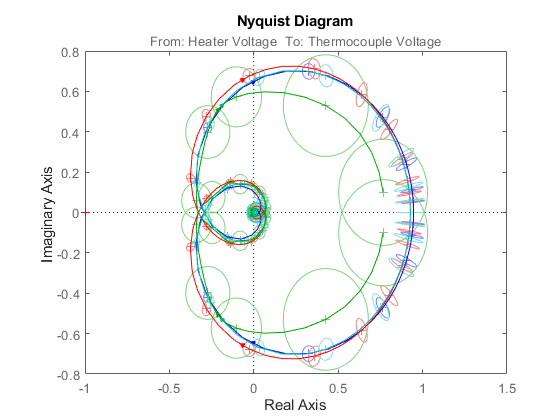線形モデル同定の基礎
線形モデルの同定、適切なモデル構造の選択、モデル オブジェクト構造の作成と変更、正則化された推定の使用に関する基本情報
線形モデルは、System Identification Toolbox™ を使用して同定できる最もシンプルなモデルです。線形モデルの同定は、線形モデルがシステムのダイナミクスを完全に捉えるのに十分である場合に使用します。線形モデルを同定するには、時間領域または周波数領域の入出力データとモデル構造 (状態空間モデルや伝達関数モデルなど) から始めます。入力データに対する測定出力とシミュレートされたモデル応答の差を最小限に抑えるために、ソフトウェアによって自由モデル パラメーターが繰り返し調整されます。ツールボックスを使用すると、次のようなタスクを実行できます。
特定のモデル構造を使用して線形モデルを推定する。
ブラック ボックス モデリングのアプローチを使用して、データに最適なモデル構造を調べる。
予備の線形モデルを作成し、これを使用して推定対象とするモデルのパラメーターを初期化する。
既知のパラメーターを特定の値に固定することでシステム情報をモデルに組み込む。
正則化された推定を使用して、モデルの柔軟性を制約することでモデルの不確かさを軽減する。
トピック
線形モデルの同定
- Identify Linear Models Using System Identification App
Identify linear black-box models from single-input/single-output (SISO) data using the System Identification app. - Identify Linear Models Using the Command Line
Identify linear models from multiple-input/single-output (MISO) data using System Identification Toolbox commands. - 周波数領域同定: 周波数領域データを使用したモデルの推定
この例では、周波数領域データを使用してモデルを推定する方法を説明します。 - Estimation Report
The estimation report contains information about the results and options used for a model estimation. This report is stored in theReportproperty of the estimated model. The exact contents of the report depend on the estimator function you use to obtain the model.
モデル構造の選択
- About Identified Linear Models
System Identification Toolbox software uses objects to represent a variety of linear and nonlinear model structures. - Available Linear Models
Summary of linear model types that you can use for system identification. - ブラックボックス モデリング
ブラックボックス モデリングは、モデルの特定の数学的構造に関係なくデータを当てはめることに主な関心がある場合に有益です。 - モデル構造の選択: モデル次数と入力遅延の決定
この例では、モデル構造の選択と構成を行う方法をいくつか示します。 - Modeling Multiple-Output Systems
Use a multiple-output modeling technique that suits the complexity and internal input-output coupling of your system. - モデル オブジェクトのタイプ
モデル オブジェクト タイプには、固定係数をもつシステムを表すための数値モデル、および調整可能な係数または不確かな係数をもつシステムのための一般化モデルがあります。
モデル オブジェクト構造と制約
- Linear Model Structures
Linear models in System Identification Toolbox take the form of model objects that are linear model structures. You can construct model objects directly or use estimation commands to both construct and estimate models. You can also modify the properties of existing model objects. - Imposing Constraints on Model Parameter Values
Constrain the adjustments that the estimation algorithm can make to individual model parameters by using theStructureproperty of the mode object.
正則化
- 動的システムの正則化による同定
この例では、線形モデルと非線形モデルを同定するときに正則化を行う利点を説明します。 - Estimate Regularized ARX Model Using System Identification App
This example shows how to estimate regularized ARX models using automatically generated regularization constants in the System Identification app. - Regularized Estimates of Model Parameters
Regularization is the technique for specifying constraints on the flexibility of a model, thereby reducing uncertainty in the estimated parameter values.
その他のトピック
- Loss Function and Model Quality Metrics
Configure the loss function that is minimized during parameter estimation. After estimation, use model quality metrics to assess the quality of identified models. - Effect of Input Intersample Behavior on Continuous-Time Models
The intersample behavior of the input signals influences the estimation, simulation and prediction of continuous-time models. A sampled signal is characterized only by its values at the sampling instants. However, when you apply a continuous-time input to a continuous-time system, the output values at the sampling instants depend on the inputs at the sampling instants and on the inputs between these points.

